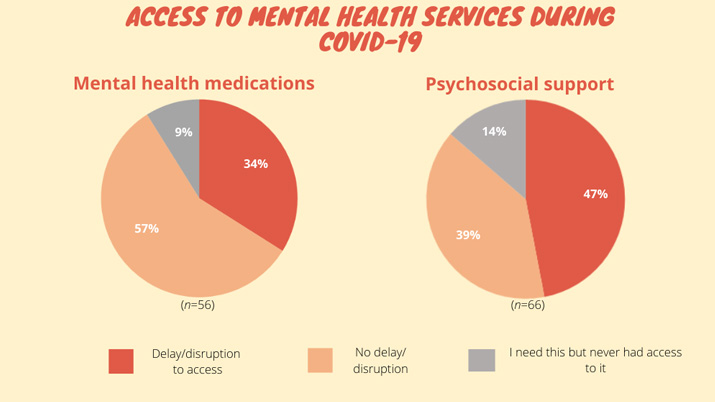In a new study it was ascertained how COVID-19 impacts the mental and physical health of different people by ethnicity. People from ethnic minority groups are almost three times as likely to contract COVID-19 and five times more likely to experience serious outcomes. Comparing data from 1,533 U.S. adults collected in February 2020 with data from 1,577 adults in December 2020, the survey revealed that People of Color (POC) are less likely to rate their overall health and wellness as “excellent” or “very good” compared with white Americans.
Andrea Heyward, deputy director of the Center for Community Health Alignment, said, “COVID-19 has brought to the forefront a tale of two pandemics. One of which has impacted every major system within our [country]: systemic racism. The other [pandemic], COVID-19, has made the general public aware of the inequities that exist within our systems of care as Black Indigenous Persons of Color (BIPOC) and those that identify as Latino or Latinx have always experienced disproportionate inequities in healthcare.” Dr. Michelle Ogunwole, health disparities researcher in San Antonio, Texas, noted that some access problems during the early days of the pandemic were due to patient-related reasons, such as being afraid to go to a doctor’s office for fear of contracting the virus.
Surveying the details, it was found that:
Asian, Hispanic, and Black populations have had more difficulties accessing medical professionals since the pandemic in the following ways:
Inability to see doctors or get treatments:
- Asians: 22 percent
- Hispanics: 20 percent
- African Americans: 17 percent
- Whites: 16 percent
Delayed doctor or medical appointments due to lack of availability:
- Hispanics: 37 percent
- Asians: 36 percent
- Whites: 36 percent
- African Americans: 31 percent
In addition, it is difficult to compare the overall degree of risk between different ethnic minority groups, as the risk factors and effects of COVID-19 are intersectional. Often, people from ethnic minority groups are disproportionately impacted by multiple and inter-relating factors. For example, people from some minority ethnic groups may be more likely to have an underlying health condition and more likely to work in a job with higher occupational risk. The Public Health England report showed that people of Chinese, Indian, Pakistani, Other Asian, Caribbean and Other Black ethnicity had between 10–50% higher risk of death compared with those of White ethnicity when other factors (such as age, deprivation and region) were controlled for. Many reports (including by Public Health England) have found that ethnic minority groups have the highest age standardised COVID-19 diagnosis rates, whilst White ethnic groups have the lowest. Between 28 May and 26 August, Black women were over twice as likely to test positive compared with White women, and Black men were almost three times as likely to test positive compared with White men.
Researchers are conducting investigations into whether genetic components can make people more susceptible to the serious health consequences of COVID-19. However, the role of ethnicity in genetic susceptibility to viruses is highly controversial, and there is very little evidence that the disproportionate effects of COVID-19 on different ethnic minority groups have anything to do with genetics.
Dr. Kunjana Mavunda, a pediatric pulmonologist in Miami, agreed. She explained that before the pandemic, clinics that provide care to poor, marginalized groups tend to have long wait times to get appointments, the physical facilities are not well-kept, and the education of the staff might be inadequate. Mavunda said, “Due to inadequate financial support, these clinics may not have adequate preventative programs, and when appointments are given, patients have to wait for a long time to be seen, which means that a person would have to take a whole day off from work in order to get medical attention.” She further added, “Because of this, patients tend to seek care only when they are sick, and then, they are more likely to go to an urgent care center or emergency room. So, the patient is not able to develop a working relationship with a primary care provider, care is episodic, and there is no continuity of care.”
Also, poverty and transportation problems increased during the pandemic, makes it difficult for people to keep appointments.


